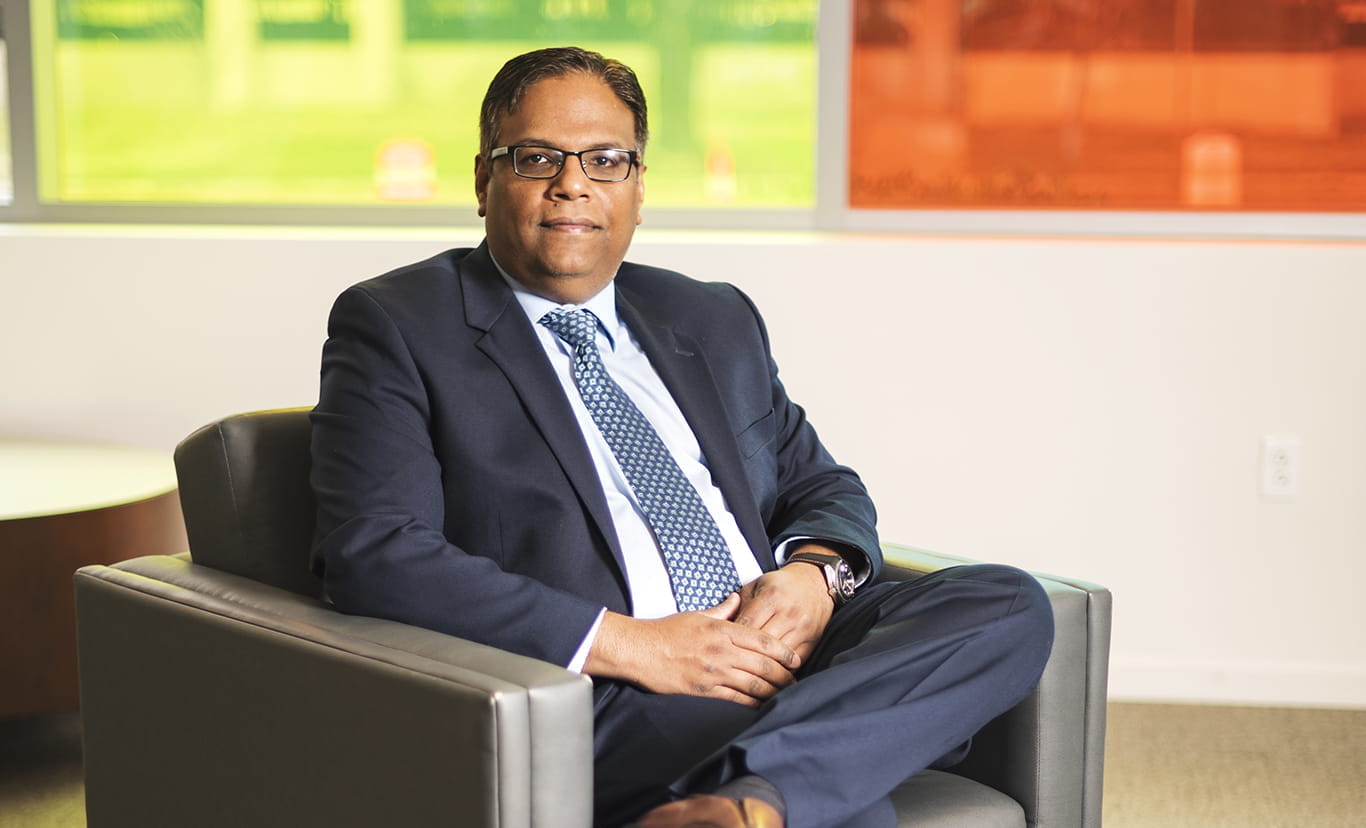IN SOME WAYS, Dharmakumar’s seminal work is a great example of how technology—and a fresh perspective—can pay big dividends.
Evidence that there is hemorrhaging in the heart has been around for decades. But until recently, it received little research focus. For Dharmakumar, its presence—and unknown effects—was an itch that he needed to scratch. “I have always been plagued by that question—does it really matter?” he said. “We know that hemorrhagic stroke is terrible—it’s one of the worst strokes you can have. So, we’ve always been thinking there’s got to be something here.”
At Northwestern, Dharmakumar and his colleagues found that this hemorrhaging led to deposits of iron particles in the heart. Their presence seemed to prolong healing after a heart attack, but how this worked remained a mystery.
At Cedars-Sinai, his team determined that the iron particles from the hemorrhaging crystallized into sharp particles that damage the responding immune cells, causing them to spew toxins. Because the iron never left the heart following an attack, the result was persistent inflammation, adverse effects on heart rhythm, and eventual heart failure.
In August, Dharmakumar came to IU, where he and his colleagues began publishing some of their most exciting discoveries yet. In January, they described, in the Journal of the American College of Cardiology, how the death of heart tissue doesn’t end when blocked vessels are reopened. In fact, for half of the large animals in their study with hemorrhage, a second wave of heart muscle cell loss occurred—doubling the size of the zone impacted by the heart attack.
“Most people leave the hospital after a heart attack feeling well but don’t appreciate the lifelong risk of things like heart failure and sudden cardiac death from an arrhythmia,” Raman said. “This work helps identify nearly half of patients successfully treated for a heart attack that are at higher risk of these complications.”
Raman said the discovery sets the stage to better identify and treat high-risk individuals before leaving the hospital, improving their chances of staying healthy long-term.
And, soon to be published, a study by Dharmakumar and his collaborators shows how, in animal models, removing the effects of hemorrhage can lead to a better recovery.
The findings opened the door to a pilot study, which began in March, that will test the therapy in humans. If it shows promise, it could lead to a clinical trial based at Krannert. “We are putting a lot of resources in place and assembling the machinery well ahead of time because we think it’s going to be a positive study,” Dharmakumar said.
And there are other areas for potential breakthroughs in his sights:
- A cost-effective point-of-care test to detect hemorrhaging based on blood proteins immediately following a heart attack.
- Drug therapies to halt the damage from hemorrhaging.
- A potential way to open blockages in a safer way to mitigate the development of hemorrhage.
Much further down the road, he wants to improve the effectiveness of stem cell therapies as a tool to heal the heart.
Several of the advances are coming to the fore now due to improvements in magnetic resonance imaging for heart patients, a key component of his work as associate director of the Biomedical Imaging Research Institute at Cedars-Sinai. And it goes back to Dharmakumar’s long-held interest in using technology to advance health care.
RAISED IN CANADA to Sri Lankan immigrants, Dharmakumar grew up hearing stories about the deaths of two of his grandparents due to heart attacks. “That always stuck with me, as a kid, to work on that. I didn’t know what I could contribute, but it was something I wanted to work on.”
Dharmakumar’s parents wanted him to become a physician, but he couldn’t stifle a passion for understanding how things work. At the University of Toronto, he earned undergraduate degrees in physiology and physics, a Master’s in mathematics, and a doctorate in medical physics. He would contribute to medicine, but not in the way his parents imagined.
His mentors suggested Dharmakumar focus his talents on the brain. They told him all the mysteries of the heart had been deciphered. He wasn’t buying it. And the heart just held too much fascination for him.
After his successes in Chicago and Los Angeles, the draw to Indianapolis was multi-layered.
He appreciated the approach of Raman, the director of the Cardiovascular Institute—connecting research and patient care in even greater ways, her appreciation of new applications of cardiac imaging, and her appreciation of the sciences and engineering in diagnosing and treating heart disease.
Then, there were dramatic differences between the patient populations in southern California and Indiana. At Cedars-Sinai, the medical center saw roughly 100 large heart attacks per year. IU Health sees 3,000. That’s more people to help and more potential research subjects. “We have many patients here in Indiana that are probably getting hurt quite badly, and it’s a place we can make an impact,” he said.
And then there was the Krannert legacy. As Dharmakumar’s scholarly work ventured into electrophysiology more than a decade ago, he learned of Zipes’ work. People he encountered in cardiology spoke highly of Krannert.
In his first months at IU, Dharmakumar set a goal to increase Krannert’s NIH research funding—and already there’s progress. When Dharmakumar arrived, the center had just two R01 grants. Within a few months, the center’s grants increased multifold.
Some of his work is already complimenting Krannert’s history—chief among them how myocardial hemorrhage has implications for the heart’s electrical impulses. “That would be a handshake between the legacy of Krannert and what we’re doing,” Dharmakumar said. “It’s kind of the chronic heart failure arrhythmia story. But it’s not the end of it.”
